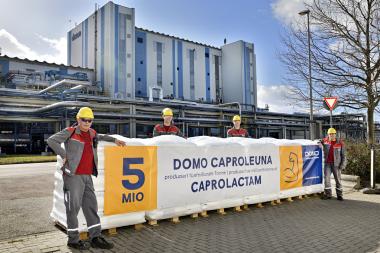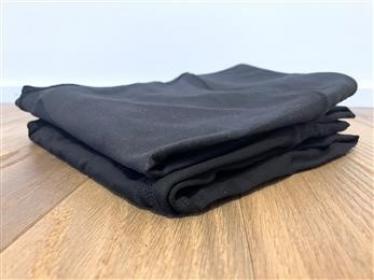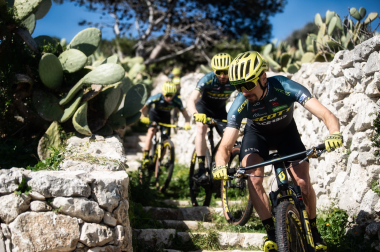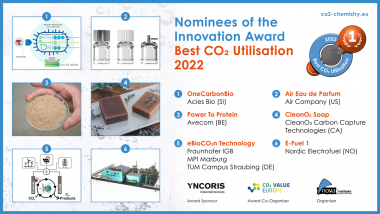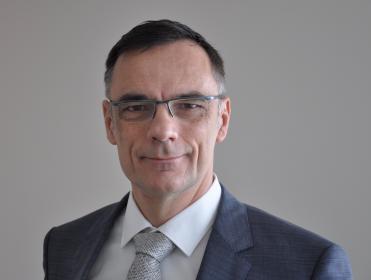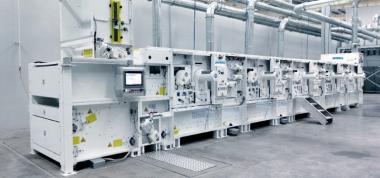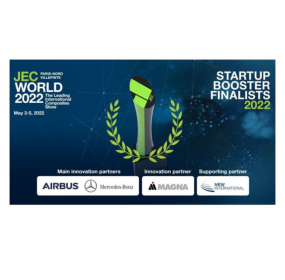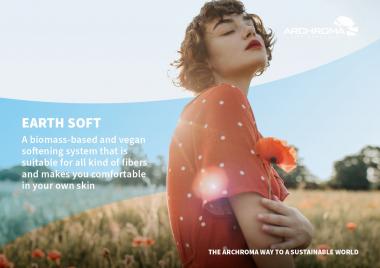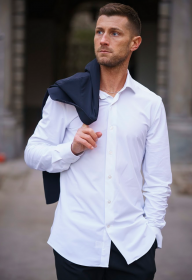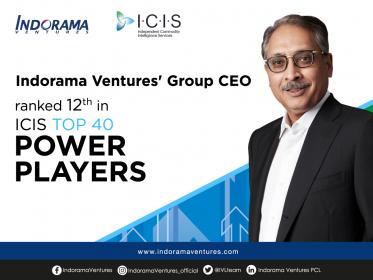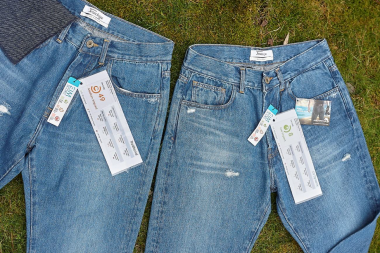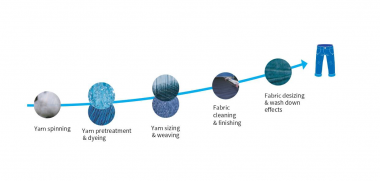DOMO produziert fünfmillionste Tonne Caprolactam
- Führender Hersteller von Polyamid-Lösungen verkündet Meilenstein in der Caprolactam-Produktion
- Seit 1942 5 Mio. Tonnen Caprolactam weltweit ausgeliefert
- Vollständige Integration am Standort Leuna sichert die Versorgung mit chemischen Zwischenprodukten, Caprolactam und Polyamid 6
DOMO Chemicals, ein führender Hersteller von Polyamid-Lösungen, verkündet zu Wochenbeginn die erfolgreiche Lieferung von 5 Millionen Tonnen Caprolactam am Standort Leuna. Seit 1942 produziert der Standort in den Anlagen hochwertiges Caprolactam. Diese Menge entspricht ca. 225.000 Lkw-Ladungen. Seit 1994 produziert das deutsche Tochterunternehmen DOMO Caproleuna GmbH am Standort im Herzen Europas Caprolactam und Polyamid. In diesem Zeitraum wurden die Produktionskapazitäten schrittweise auf aktuell 176.000 Jahrestonnen erweitert.
Die Caprolactamherstellung hat am Standort Leuna eine 80-jährige Tradition. Bereits 1942 ging in Leuna die weltweit erste großtechnische Anlage zur Produktion von Caprolactam in Betrieb. Seitdem die DOMO Gruppe im Jahr 1994 die Caprolactamanlagen übernommen hat, wurde die Technologie und das Verfahren kontinuierlich weiterentwickelt. In den letzten 20 Jahren konnte DOMO Caproleuna die spezifischen Energieverbräuche im Mitteldruckdampf um 30 % sowie im Niederdruckdampf um 40 % absenken und so den Herstellungsprozesses stetig weiter optimieren. Nachhaltigkeit stellt eine wichtige strategische Säulen des Konzerns dar. DOMO Beyond ist unser Fahrplan für innovative Projekte, mit denen wir unsere Nachhaltigkeitsziele in den Bereichen Planet Care, verantwortungsvoller Arbeitgeber und Partner of Choice erreichen wollen. Deshalb hat sich DOMO dazu verpflichtet, bis 2030 einen Nullanstieg der CO2-Emissionen gegenüber 2019, eine Reduzierung der Kohlenstoffanteile im Energiemix von DOMO um 15 % sowie eine Reduzierung der Industrieabfälle um 7 % anzustreben.
„Über die letzten 3 Jahrzehnte haben wir den Caprolactam-Anlagenkomplex stets weiter ausgebaut und die Produktionsmengen umfangreich gesteigert. Der heutige Fokus liegt klar bei der Effizienzsteigerung und Energieeinsparung“, so Dr. Thomas Jende, Produktionsleiter für Caprolactam.
Das wichtigste Vorprodukt für Polyamid 6
Caprolactam wird vor allem zur Herstellung von Polyamid 6 benötigt und in der eigenen, am Standort integrierten Polymerisation unter dem Markennamen DOMAMID® und TECHNYL® weiterverarbeitet. DOMAMID® kommt als Basispolymer vorrangig für Engineering Plastics-, Textil- und für Folienanwendungen zum Einsatz. „Der Erfolg ist eine Teamleistung: Das Produktionsjubiläum ist nur möglich, da auch in den vor- und nachgelagerten Verfahrensstufen der Wertschöpfungskette zum Caprolactam die entsprechenden Produktionsmengen erreicht wurden,“ sagt Luc de Raedt, Site Director Leuna. Insgesamt beschäftigt DOMO am Standort Leuna rund 620 Mitarbeiter.
DOMO Chemicals


